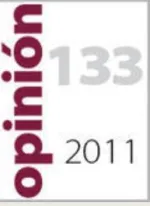Europe is heading towards a directoire of the rich

Elina Viilup,
Research Fellow, CIDOB
15 November 2011 / Opinión CIDOB, nº 133
The Greek debt crisis and the fear of contagion in a number of European countries has resuscitated old controversies over the depth of the European integration and latent tensions that have been cumulating over the lifetime of the European Union.
Over the last months different scenarios have been suggested, from the disintegration of the monetary Union to the creation of a federal core of countries with tightly connected economic and fiscal policies. The recent developments seem to be giving the right to those who have been all along suggesting that the result of the current crisis will be more integration among some of the EU member states.
In a speech to the students in the University of Strasbourg, the French president Sarkozy has come out in favour of a proposal of a two-speed Europe. He has suggested that this would mean a more integrated Eurozone and a confederal solution for the rest. Moreover, it has come to the light that the country has for months been holding consultation at all levels with Germany on how to achieve this. Apparently the issue of common taxes as well as a possibility of some countries leaving the Eurozone seems to have been on the table too.
The German-French attempts to create a “federal core” on the basis of some countries of the Eurozone, have been followed in horror by the majority of the other members of the Eurozone. The tandem seems to have in mind the creation of a highly integrated rich Europe at the core, with the poor and laggard in the next concentric circle. A veritable directoire. The solidarity-based European integration project would be done and over, and rightly the Commission president Durao Barroso has spoken strongly against it as a major step backwards in the European integration process. Unfortunately, no matter how loud the Commission will speak, the core-periphery option is becoming plausible for the first time in the EU’s history.
The consequences that such a system would bring to the countries left in the periphery are difficult to predict with any level of exactitude but probably both economically and politically more unpleasant than staying inside the core, considering that being “in” would have meant non-stop implementation of highly unpopular and welfare dismantling austerity measures. The latter, while contributing possibly to better management of the countries, will not fix rich Europe’s main problem – the lack of economic growth.
Strengthening the Eurozone by Treaty change remains the most preferred option and has been at least publicly supported by the German Chancellor. This option would respect the Treaties and move the European Union with the agreement of all countries towards more integration. Unfortunately, the cacophony of interests and national voices makes any coherent result impossible to achieve, at least in the short-term basis that the markets are willing to.
However, a dramatic outside-the-Treaty solution may be the only way out of the cul-de-sac Europe finds itself in. The classical Treaty change mechanism which needs the agreement of all member states as well as ratification by national parliaments and referenda in some countries has shown its limits in the recent past. Indeed, reaching any meaningful agreement among all 27 member states has become a mission impossible, be it the size and use of the European budget or the EU’s position on the murderous Libyan regime.
This would also mean that the Union would be forced to face some of the other latent tensions that have been created over the years of enlargement, most importantly the issue of the UK EU membership which has been looming for decades. The British government has since 1973 positioned itself against any closer integration attempts, and could be offered a looser form of association. Being put in front of the decision of more integration or less, could help a few other countries to clarify their true European affiliations too.
And yet, it would be the end to the dream of a value-based Europe whilst probably becoming the beginning of a more pragmatic, results-oriented and market-based EU. Once again economics, not politics, are driving the European construction path.
Elina Viilup,
Research Fellow, CIDOB